Major survey of renowned 19th-century European aristocratic portraitist opens at the Museum of Fine Arts, Houston
Franz X. Winterhalter, Princess Leonilla of Sayn-Wittgenstein-Sayn, 1843, oil on canvas, J. Paul Getty Museum, Los Angeles.
HOUSTON, TX.- The Museum of Fine Arts, Houston, opens High Society: The Portraits of Franz X. Winterhalter, an exhibition of some 45 paintings by Franz Xaver Winterhalter (1805–1873), the most renowned portraitist of the courts of Europe during his day. Throughout the course of his career, Winterhalter captured the elegance of his aristocratic sitters with an unrivaled brilliance of technique and sensitivity of touch. Complementing his canvases are a number of garments fashioned by sought-after 19th-century couturier Charles Frederick Worth (1825–1895) and several of his contemporaries. Featuring works drawn from public, private, and royal collections around the world, the exhibition is on view in Houston from April 17 to August 14, 2016, between its presentation at the Städtische Museen Freiburg, Germany, and the Musée du Château de Compiègne, France.
Franz X. Winterhalter, Pauline Sándor, Princess Metternich, 1860, oil on canvas, private collection.
“Winterhalter’s portraits provide the most vivid and lasting impression of the European courts during their last hurrah,” said Gary Tinterow, MFAH director. “While each of the monarchs, noblemen and women were frequently photographed during their reigns, it is often a Winterhalter portrait that provides the strongest impression of those individuals, magnificent images that still ring true today. Like van Dyck before him, and John Singer Sargent afterwards, Winterhalter had an uncanny gift for noble portraiture.”
Franz X. Winterhalter, Édouard André, 1857, oil on canvas, Musée Jacquemart-André, Institut de France, Paris. © Culturespaces—Musée Jacquemart-André.
“Winterhalter had an extraordinary talent in capturing the likeness of his subject and in evoking the sensuousness of skin, hair, and luxurious fabrics,” said Helga Aurisch, curator of European art. “This exhibition places his work in direct comparison with actual costumes from the period, which brings new insight into his use and interpretation of fashion, a factor of utmost importance to his success as the ultimate painter of the high society.”
Franz X. Winterhalter, Madame Rimsky-Korsakov, 1864, oil on canvas, Musée d’Orsay, Paris, on permanent loan from the Louvre.
Franz Xaver Winterhalter
Born in 1805 in the small village of Menzenschwand, Germany, Winterhalter’s talents were discovered at an early age by a teacher who encouraged his training as a draughtsman and lithographer in nearby Freiburg. In 1823, Winterhalter moved to Munich to study at the art academy as well as with Joseph Karl Stieler, a renowned portraitist and court painter to the Bavarian king. It was his mentorship that likely instilled in Winterhalter the love of portraiture and the ambition to attain a similar position.
In 1830, Winterhalter left Munich for Karlsruhe, Germany, where he produced portraits of Grand Duke Leopold and Grand Duchess Sophie Wilhelmine and, with their support, traveled to Rome in 1832. Upon his return to Karlsruhe in the summer of 1834, the Grand Duke appointed Winterhalter as his court painter. Soon after, however, the young painter departed for Paris, a move that would prove momentous for his career: Winterhalter quickly gained popularity there and, within a very short time, King Louis-Philippe made him the de facto court painter. Winterhalter was commissioned to produce more than 30 full-length portraits of the French royal family, which remain at Versailles today – several of which are featured in the exhibition – and are regarded as some of his finest works.
Franz X. Winterhalter, Empress Eugénie (Eugénie de Montijo Condesa de Teba) in 18th-Century Costume, 1854, oil on canvas, The Metropolitan Museum of Art.
Following this success, in 1842, Winterhalter traveled to England for the first time. He eventually became the preferred portraitist of Queen Victoria and Prince Albert, fulfilling over 120 commissions for the queen over the next 20 years. Throughout the 1850s and 60s, Winterhalter’s services were in much demand around the Continent, and he traveled extensively throughout Europe to Spain, Belgium, England, Switzerland, and his native Germany. He painted Emperor Franz Joseph and Empress Elisabeth (‘Sisi’) of Austria, the Czarina of Russia, Emperor Napoleon III and Empress Eugénie of France, Queen Isabella II of Spain, and countless aristocrats and courtiers from all over Europe. The only verifiable portrait of an American beauty is also included in the show.
Franz X. Winterhalter, Swiss Girl from Interlaken, 1840s, oil on canvas, private collection.
Winterhalter was praised for the subtle intimacy of his portraits and for his ability to create an image that his sitters wished to project. Although his work was dismissed by some as saccharine or superficial, Winterhalter was celebrated by many of his contemporaries for his ability to capture the likenesses of his sitters and for his superb rendering of textures and fashionable details.
Following the fall of France’s Second Empire in 1870, Winterhalter’s reign as court painter came to a sudden end. He returned to his native Baden and died two years later. Despite decades of continued success and the extraordinary proliferation of his works, Winterhalter’s name was all but forgotten until a groundbreaking 1987 exhibition organized by the National Portrait Gallery, London, and the Petit Palais, Paris. High Society includes numerous works not shown in the earlier retrospective.
Franz X. Winterhalter, Lydia Schabelsky, Baroness Staël von Holstein, c. 1857–58, oil on canvas, Virginia Museum of Fine Arts, Richmond.
Winterhalter and Worth
While many of Winterhalter’s iconic portraits of European nobility and royalty predate the entry of couturier Charles Frederick Worth into the field of fashion, writes Helga Aurisch in the catalogue for the exhibition, “their client lists overlapped to such an extent that it can be argued that together they created the ideal image of the elegant woman of the European courts.”
Born in England, Worth left for Paris as a young man and it was there that he ultimately established his haute couture salon, the House of Worth, in 1858. The garments on display—including ball gowns, wedding dresses, and morning ensembles—which were crafted by Worth and his contemporaries and reflect the styles often worn by the subjects of these grandiose paintings, shed light on Winterhalter’s interpretations of 19th-century fashion, a determining factor in his success as premier painter of high society.
Charles Frederick Worth, Evening Bodice and Skirt, c. 1866–68, yellow silk satin with lace and tulle, Philadelphia Museum of Art.

/https%3A%2F%2Fprofilepics.canalblog.com%2Fprofilepics%2F1%2F0%2F100183.jpg)
/https%3A%2F%2Fstorage.canalblog.com%2F03%2F02%2F119589%2F96711876_o.jpg)
/https%3A%2F%2Fstorage.canalblog.com%2F11%2F31%2F119589%2F94773502_o.jpg)
/https%3A%2F%2Fstorage.canalblog.com%2F20%2F83%2F119589%2F94772815_o.jpg)
/https%3A%2F%2Fstorage.canalblog.com%2F26%2F72%2F119589%2F75604929_o.jpg)
/https%3A%2F%2Fstorage.canalblog.com%2F59%2F60%2F119589%2F26458628_o.jpg)
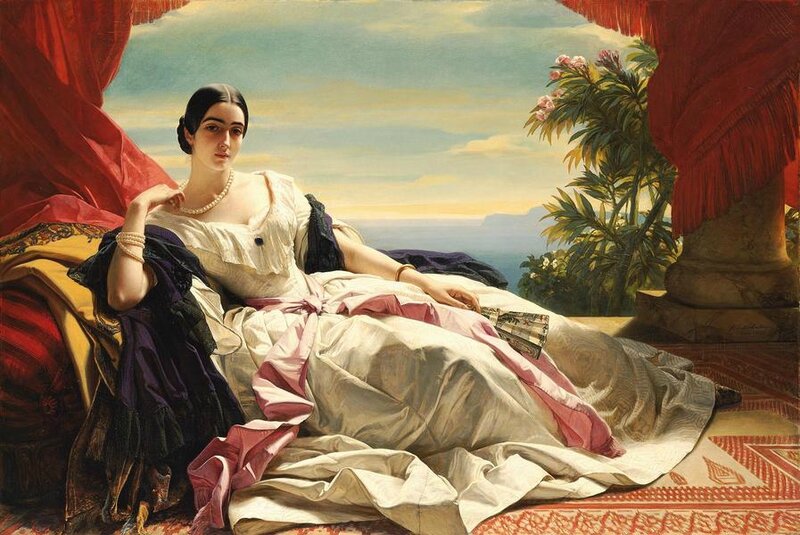

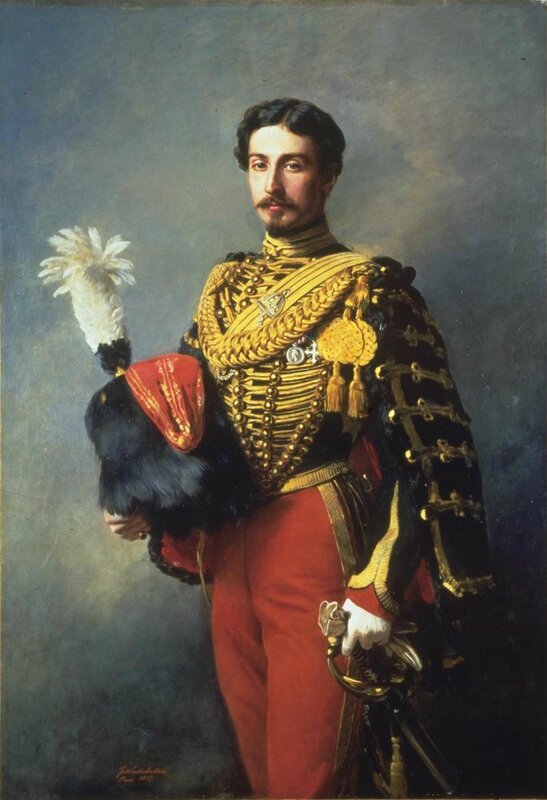
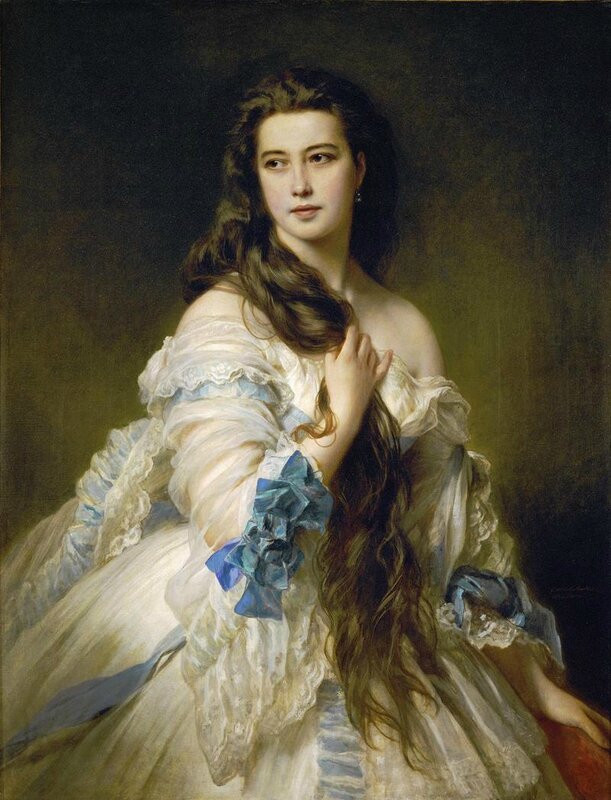
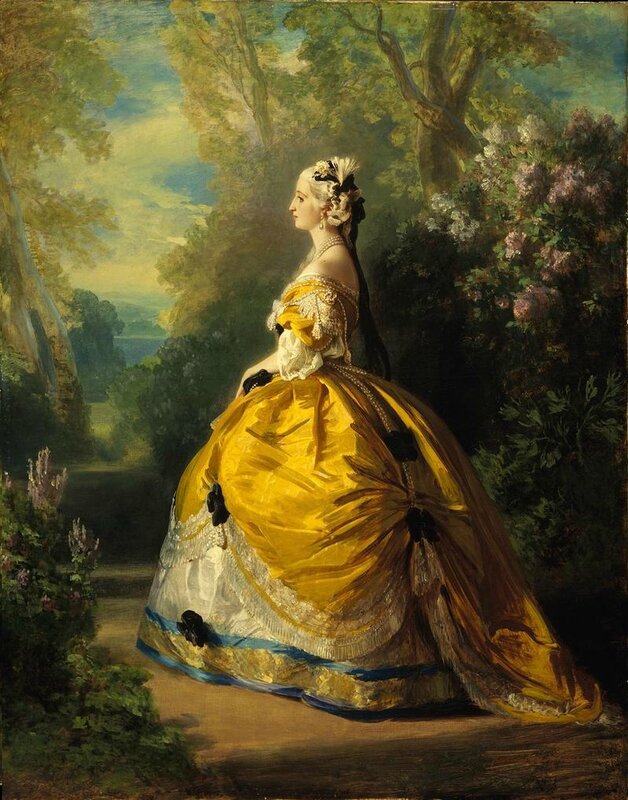
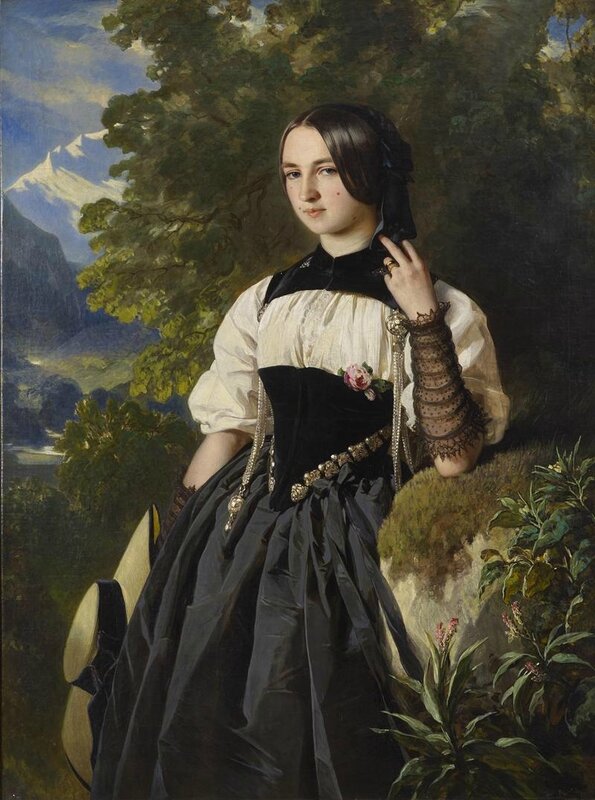




/http%3A%2F%2Fstorage.canalblog.com%2F06%2F27%2F119589%2F95327152_o.jpg)
/http%3A%2F%2Fstorage.canalblog.com%2F78%2F69%2F119589%2F92785189_o.jpg)
/http%3A%2F%2Fstorage.canalblog.com%2F76%2F35%2F119589%2F76196556_o.jpg)
/http%3A%2F%2Fstorage.canalblog.com%2F05%2F43%2F119589%2F74042147_o.jpeg)